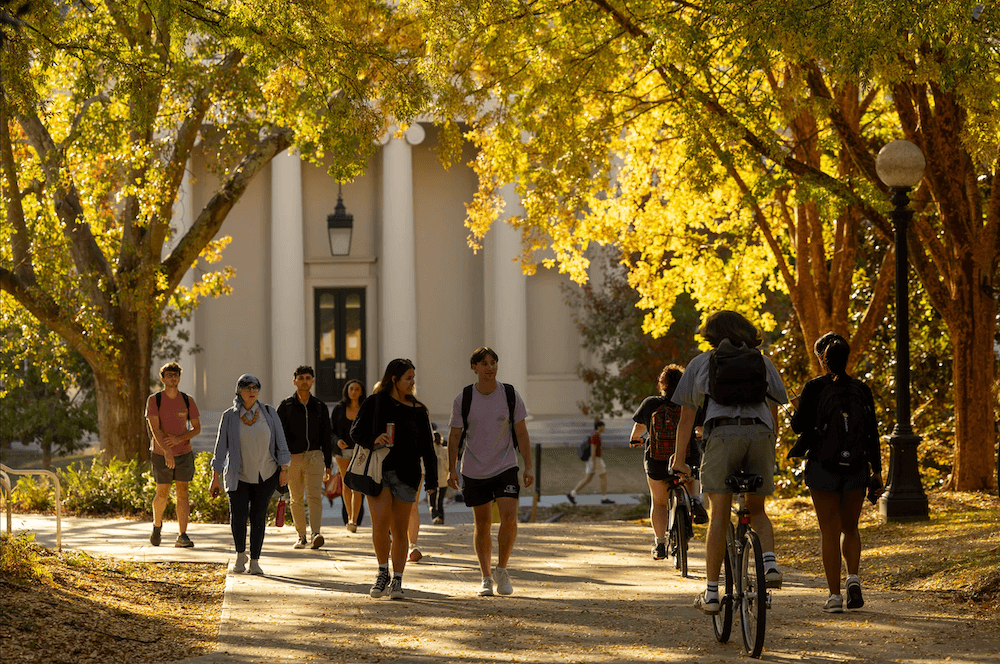By Jim Midcap
University of Georgia
Flowering dogwoods are the aristocrats of the small, flowering
trees in Georgia. They provides interest and excitement in the
spring, summer, fall and winter.

|
The low-branching, rounded tree is covered with gorgeous spring
blooms. The white, red or pink bracts open in April and May
before the leaves do.
The bright, green leaves line the horizontal branches in the
summer and turn a purplish red in the fall. The bark on older
stems develops a characteristic, deeply fissured, square pattern
easily recognized at a distance.
And the bright, red, fall and winter berries feed the landscape’s
birds.
This native tree reaches 25 to 30 feet tall and grows under the
high shade of tall trees. The flowering dogwood is best adapted
to partial shade and does best with afternoon shade. However,
many are grown in full sun and look great.
The higher the light, the more flowers dogwoods will produce. The
roots are naturally shallow and grow best in moist, organic,
well-drained soils. Dogwoods suffer when subjected to drought.
Water them thoroughly while they’re young.
Ah! Mulch better!
Sun-planted dogwoods can suffer from drought when growing under
heavy competition from plants such as turf grasses. These trees
do much better when mulched and irrigated deeply during
establishment and droughts.
Mulching and removing the grass beneath the dogwoods will keep
the mowers and string trimmers away from the trunk. The bark on
young trees is easily damaged by mowers, creating wounds that
allow disease entry into the tree.
When selecting a dogwood to plant, always choose named
selections. These have been chosen because they have improved
features.
Fast start
Most named selections bloom at a young age. A plant two to three
feet tall will be covered with flowers, while seedlings will
seldom even have even a single flower.
Selections usually have large bracts that are bright white, pink
or red. They’re usually insect- and disease-resistant. With
seedling dogwoods, you’re not sure what will develop. Plants
often don’t flower for four to six years after planting.
There are many selections to choose from, and new ones are
appearing all the time. It’s best to see the plants in bloom
before making your selection.
Some proven selections are Barton and Cloud Nine (white),
Cherokee Brave and Cherokee Chief (red), rubra (pink) and Pygmaea
(a white-bracted dwarf). Select a named cultivar to plant this
spring, and reward yourself in future springs.
(Jim Midcap is an Extension Service horticulturist with the
University of Georgia College of Agricultural and Environmental
Sciences.)



